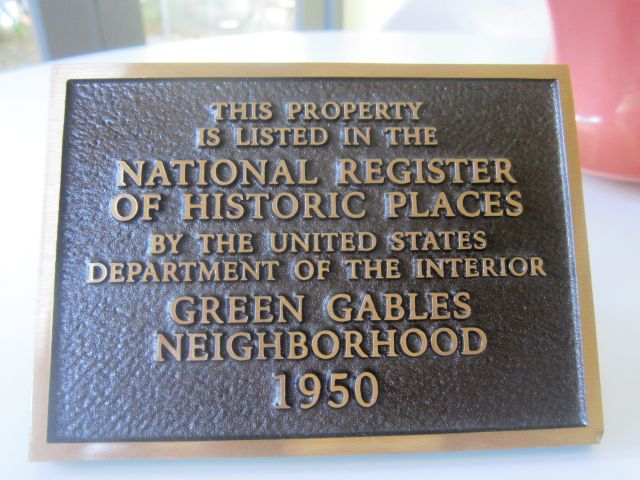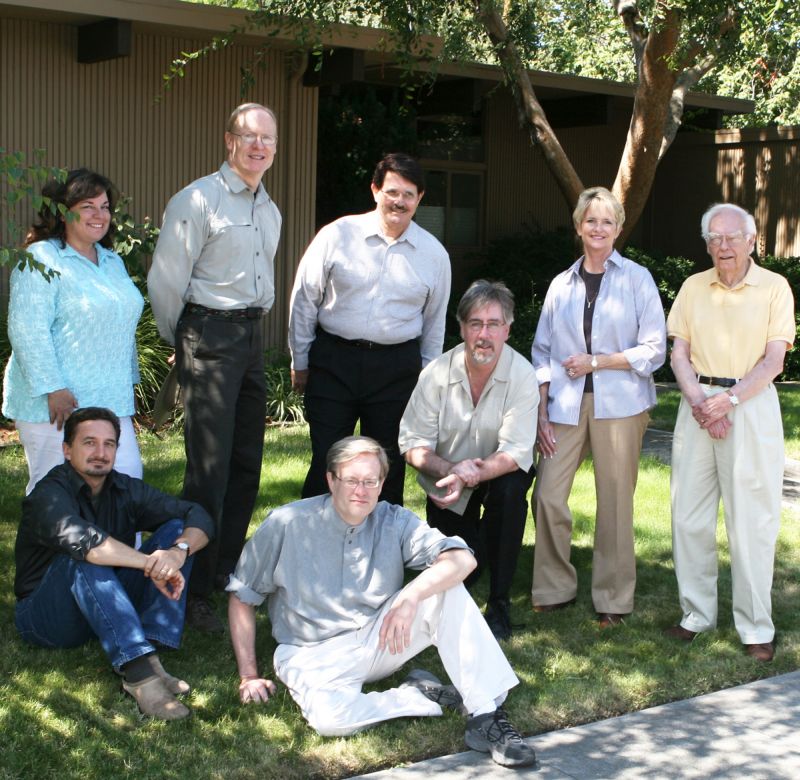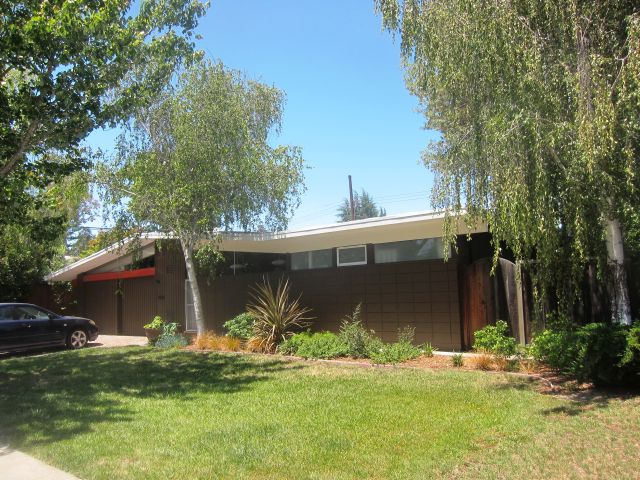
The National Register Still Seeks Eichler Homes
 |
|
|
Here’s how it could have gone. Hardworking Eichler home fanatics spent hours, days, weeks, months building a case for the historical and cultural values of their favorite homes. They succeed in getting some Eichler neighborhoods named to the National Register of Historic Places.
Check.
Shortly thereafter, inspired by this success, Eichler owners and fans elsewhere take on the task themselves, building on the first group’s work – even borrowing much of the wording of the successful National Register applications.
Soon, Eichler neighborhoods, and perhaps even some individual Eichler homes, are recognized for their importance in the East Bay, the North Bay, the Peninsula, the urban neighborhoods of San Francisco, in Sacramento, in Orange County, Thousand Oaks, and Los Angeles.
And while we’re at it, why not the three homes Joe Eichler built in upstate New York, part of a planned East Coast subdivision that never quite came together. What could be more historic than that?
But that wasn’t the way it was, not at all, as an article in the new summer issue of CA-Modern magazine shows.
 |
|
|
Ten years ago the Historic Quest Committee, made up of Eichler owners and other fans of the homes, succeeded in getting two Palo Alto neighborhoods, Greenmeadow and Green Gables, added to the National Register. But none others have followed.
“I definitely felt [Historic Quest] would lead to other neighborhoods applying to the National Register,” said Wally Fields, a member of the Historic Quest Committee, which prepared the applications a decade ago. “There was no guarantee. We didn’t think it would spur activity in the very beginning, but over the long term.”
The article suggests several explanations for the lack of follow through by other neighborhoods. Among the reasons, according to Historic Quest member Barry Brisco, are the amount of work it requires – and the relative paucity of payback.
The article also notes that efforts are underway, finally, to add other Eichler neighborhoods, and one very special Eichler house, the all-steel X-100, to the National Register.
No, as several Eichler residents note, being named to the National Register doesn’t bring with it any automatic protections against teardowns or second-story additions, two of the major banes facing Eichler homes in recent years.
But being on the Register does indicate historical importance – to the general community, not just to Eichler fans who already understand the significance of the homes. Such a listing can be used as ammunition for proponents of neighborhood preservation.
 |
|
|
National Register districts in many cities become destinations for tourism, too. So designation can be seen as a form of economic revitalization for cities.
Palo Alto, of course, is pretty vital on its own these days, and most tourism in town involves Stanford University.
Still, wouldn’t it be cool to see a few ‘Welcome to our National Historic District’ placards prominently placed about the two neighborhoods?
In fact, none can be found.
It’s been said, though not confirmed, that at one point Greenmeadow’s community association did have a bronze plaque acknowledging the honor. But where it is now is unclear.
Wally Field said he’d “heard it was stolen after being mounted. Maybe that was a suburban myth, but I think it was true.”
There is at least one such historic plaque in Green Gable. But it’s not on public display. In fact, it is privately owned and paid for, and lodged on a shelf in the home of Jinny Henke.
 |
|
|
Ironically, Henke's home did not 'contribute' to Green Gable’s being added to the National Register. That’s because, while attractive and modern in look, it has been altered in a way that detracts from its original look.
With a few historic plaques dispersed through the neighborhoods, perhaps Palo Alto could be persuaded to list the Eichler neighborhoods on tourist maps and play them up as attractions? Many Victorian neighborhoods in San Francisco are so publicized, as well as Arts and Craft bungalow neighborhoods in other towns.
Perhaps some Eichler neighbors would object to this, of course.
“Often listing a property on the National Register is done to protect the property,” says Paul Lusignan of the National Park Service, who handles register applicants from California and other western states. “Often it can help defuse the threat. For neighborhoods that are down and out, it is one tool that can be used to help bring the neighborhood up. If it’s a healthy neighborhood to begin with, they may not see a difference with the listing.”
For more about the future of Eichler homes and the National Register, and for a sneak peek of the new summer '15 issue of CA-Modern, read ‘National Register No-show.’
- ‹ previous
- 571 of 677
- next ›



